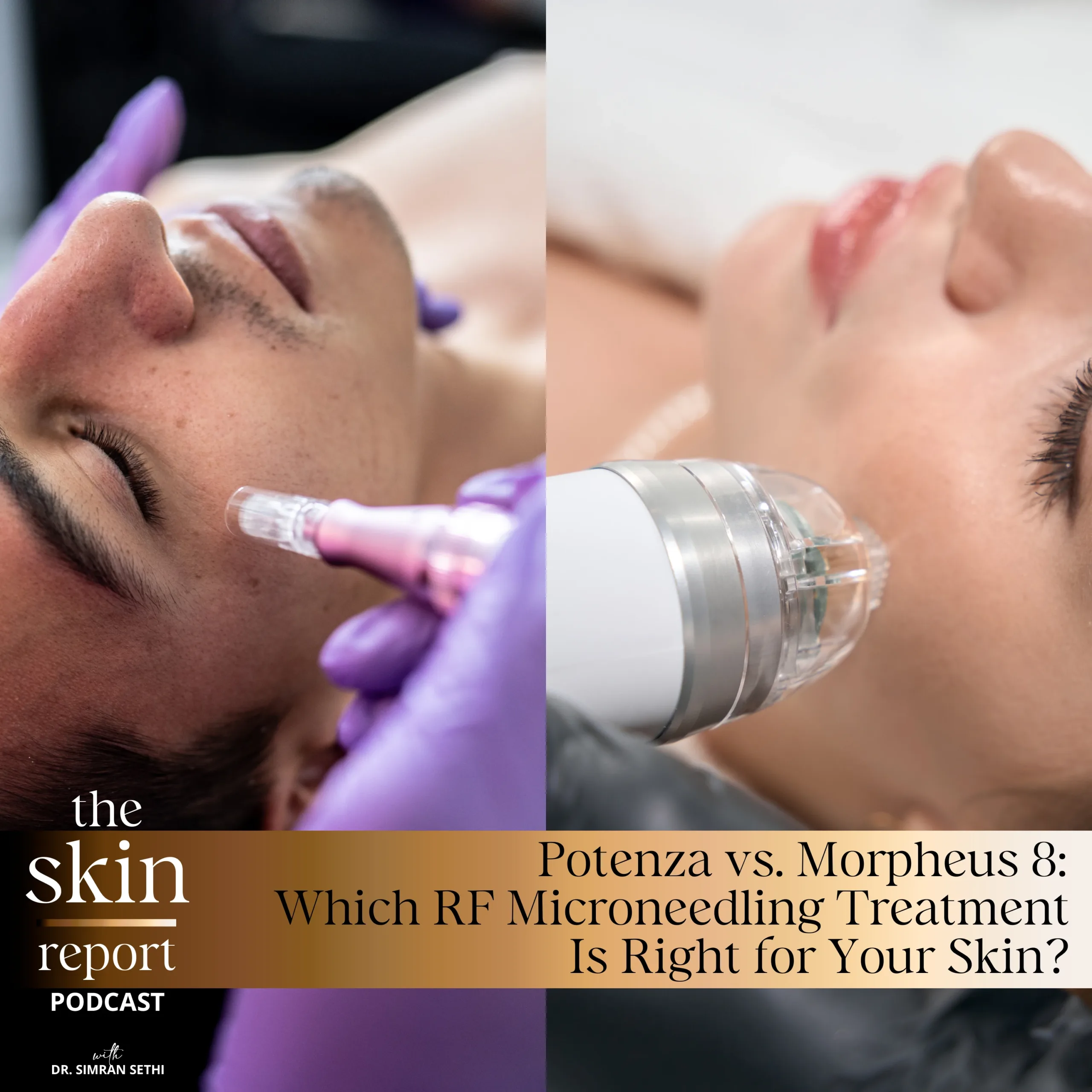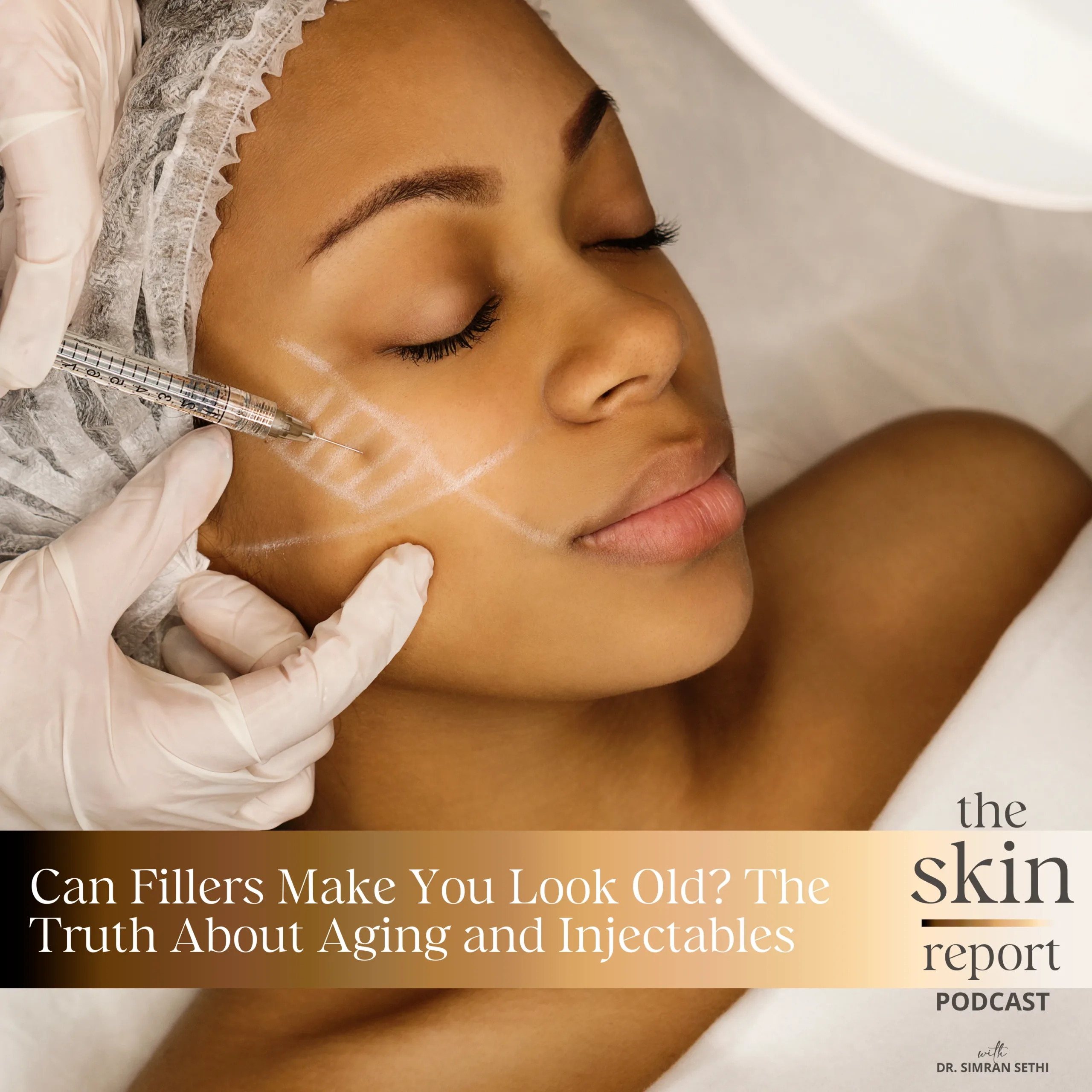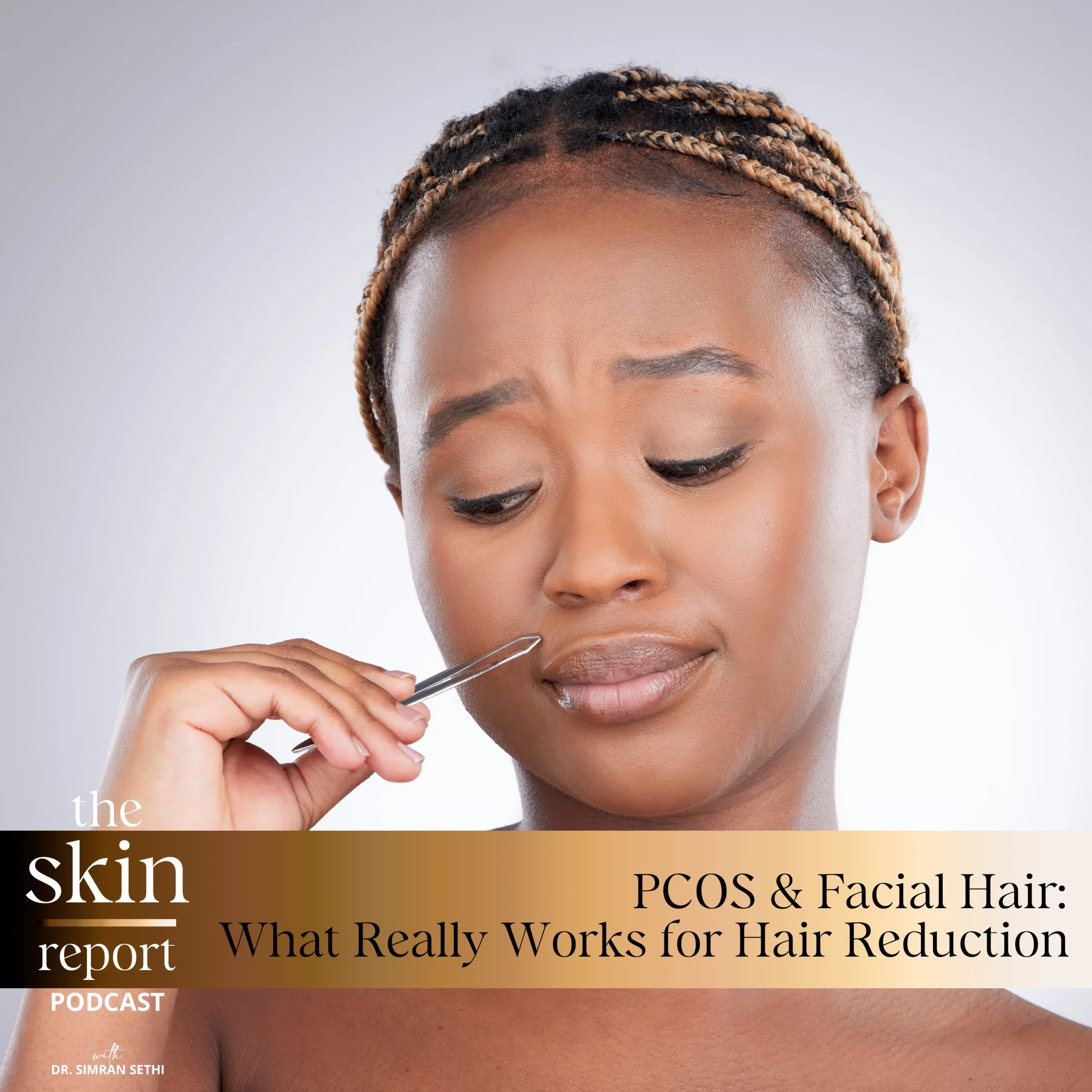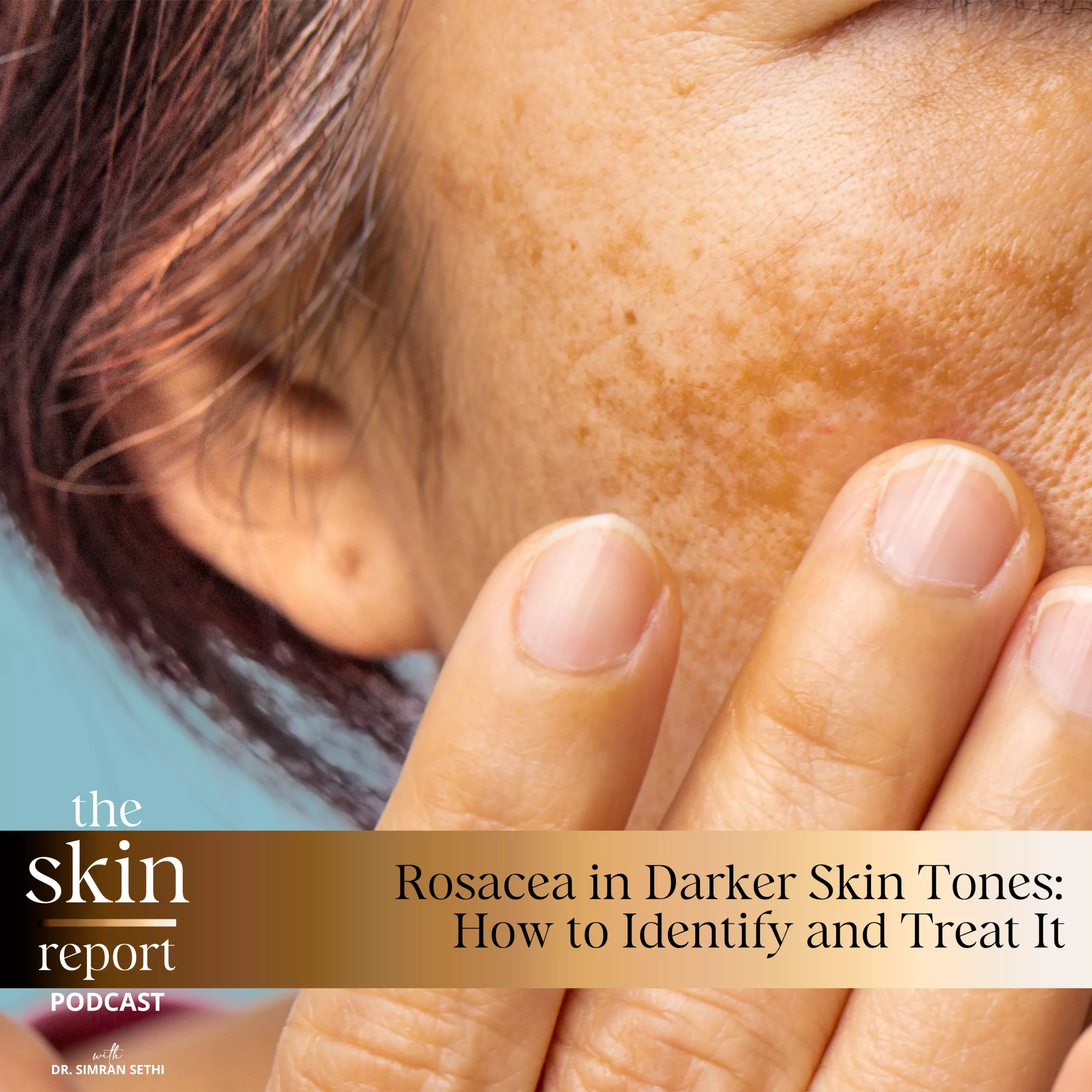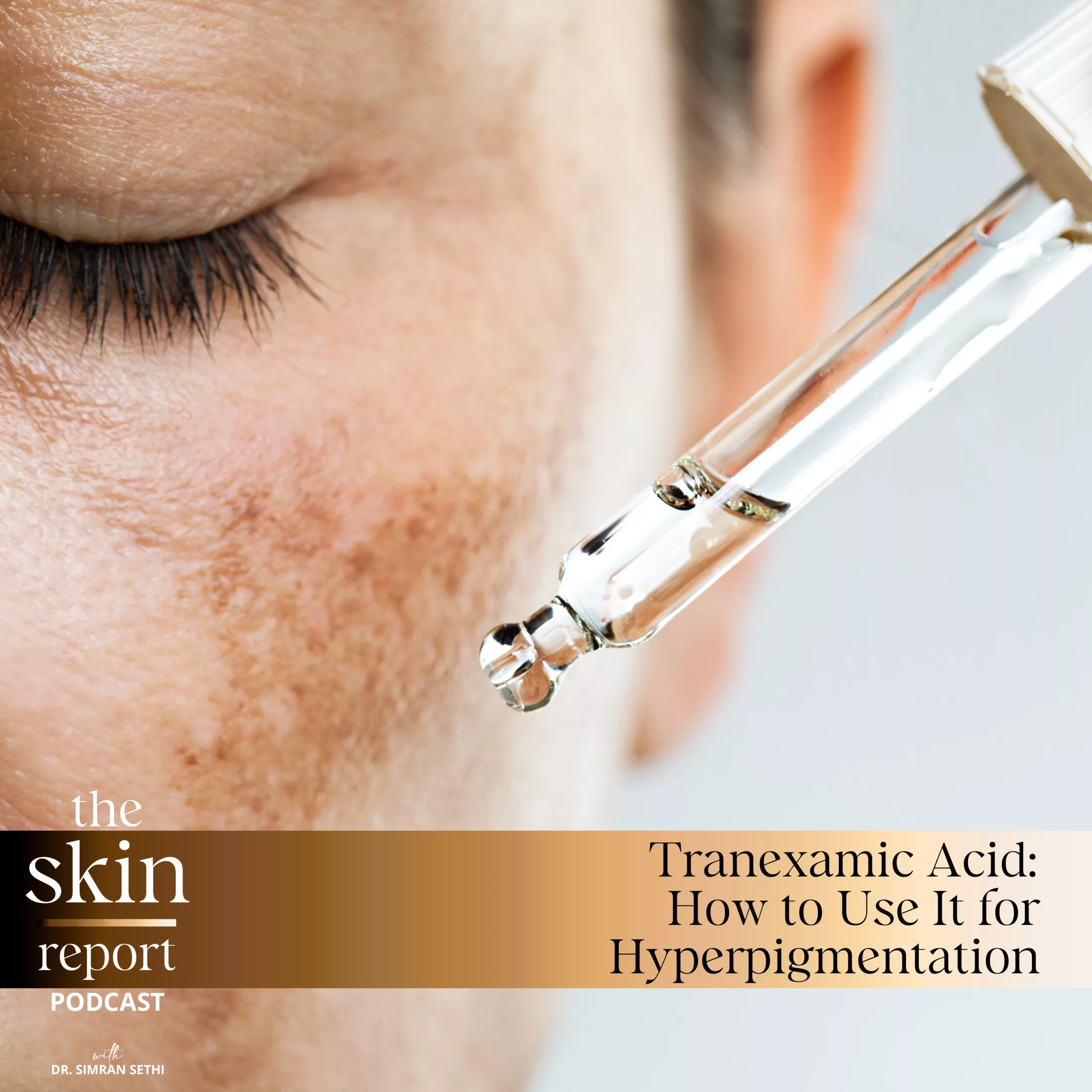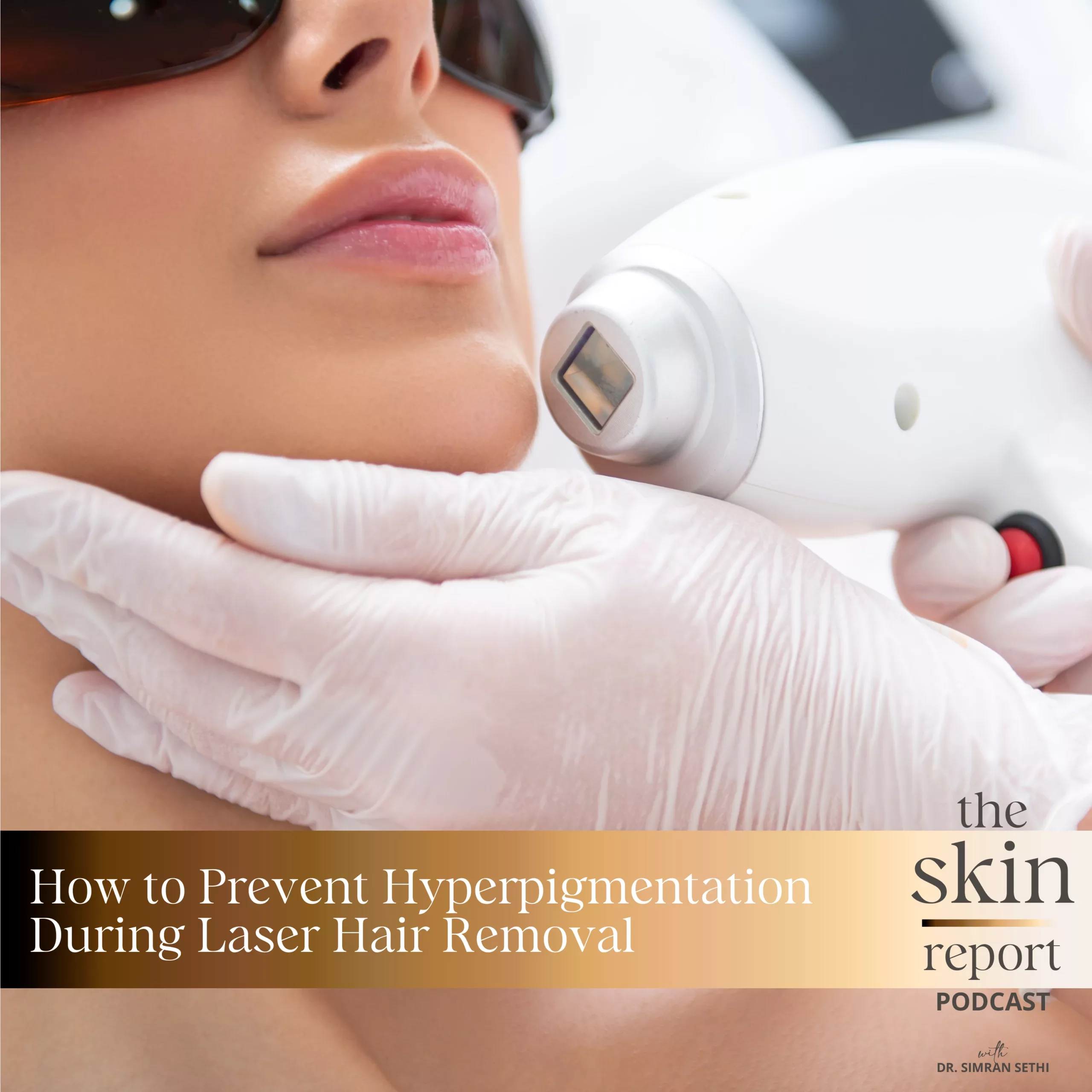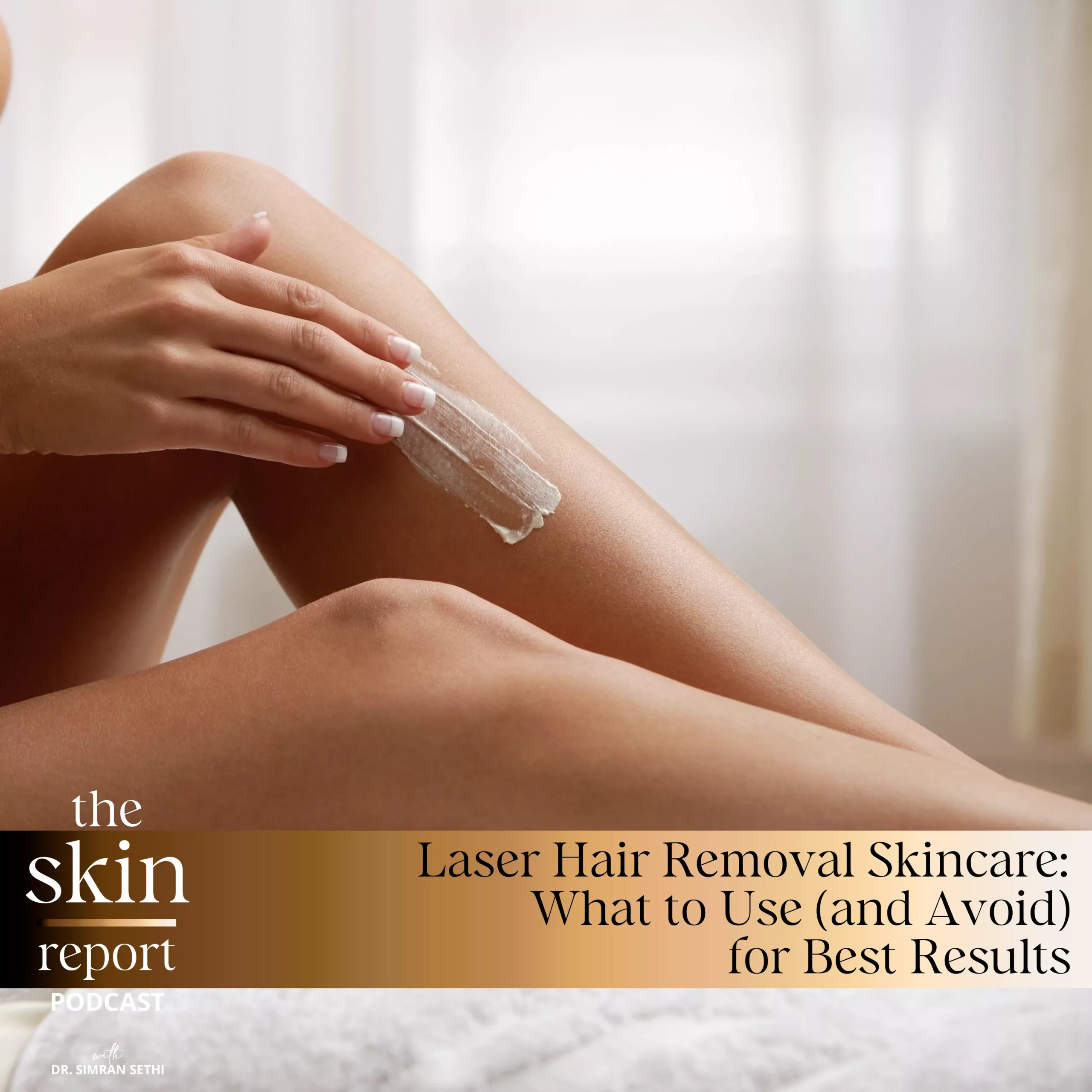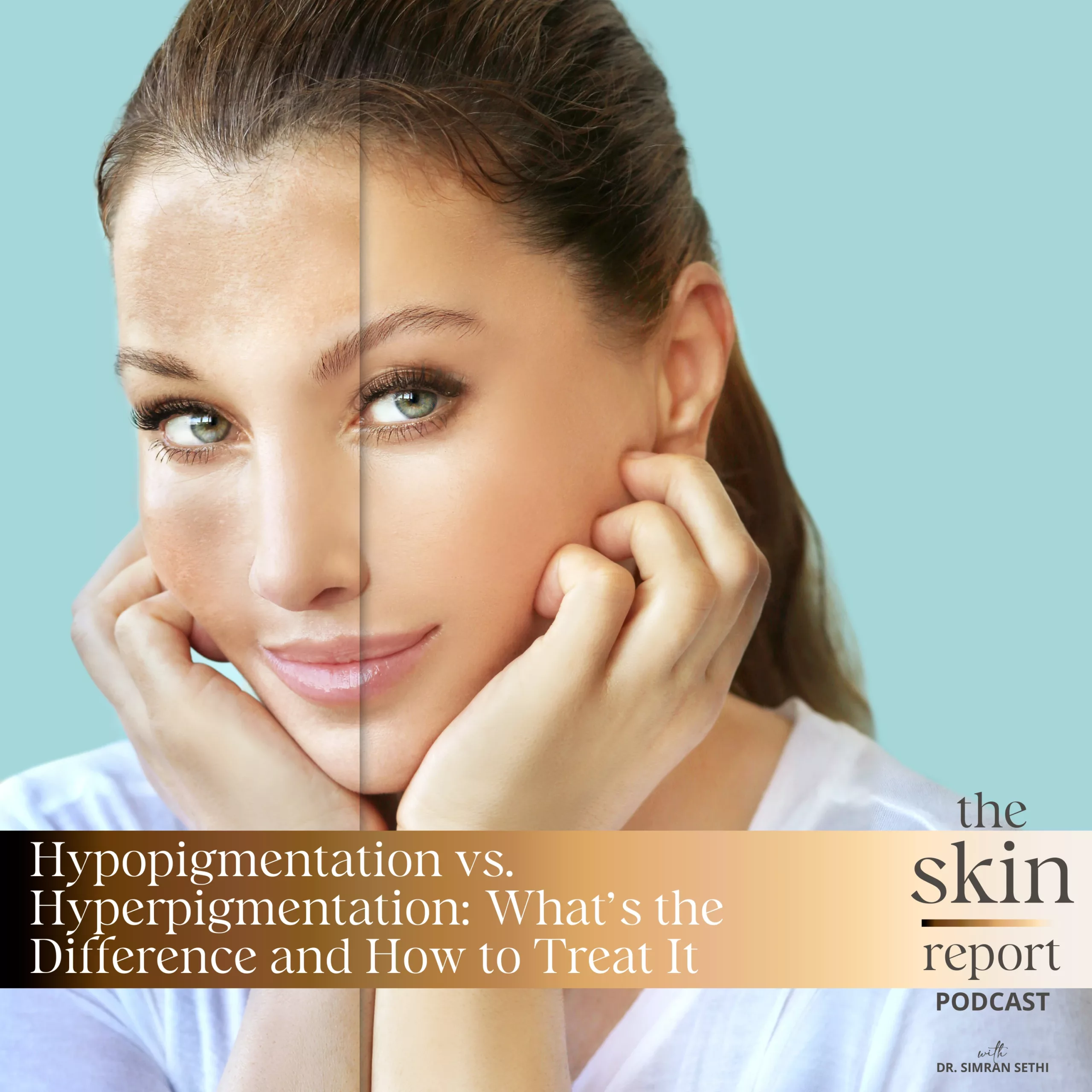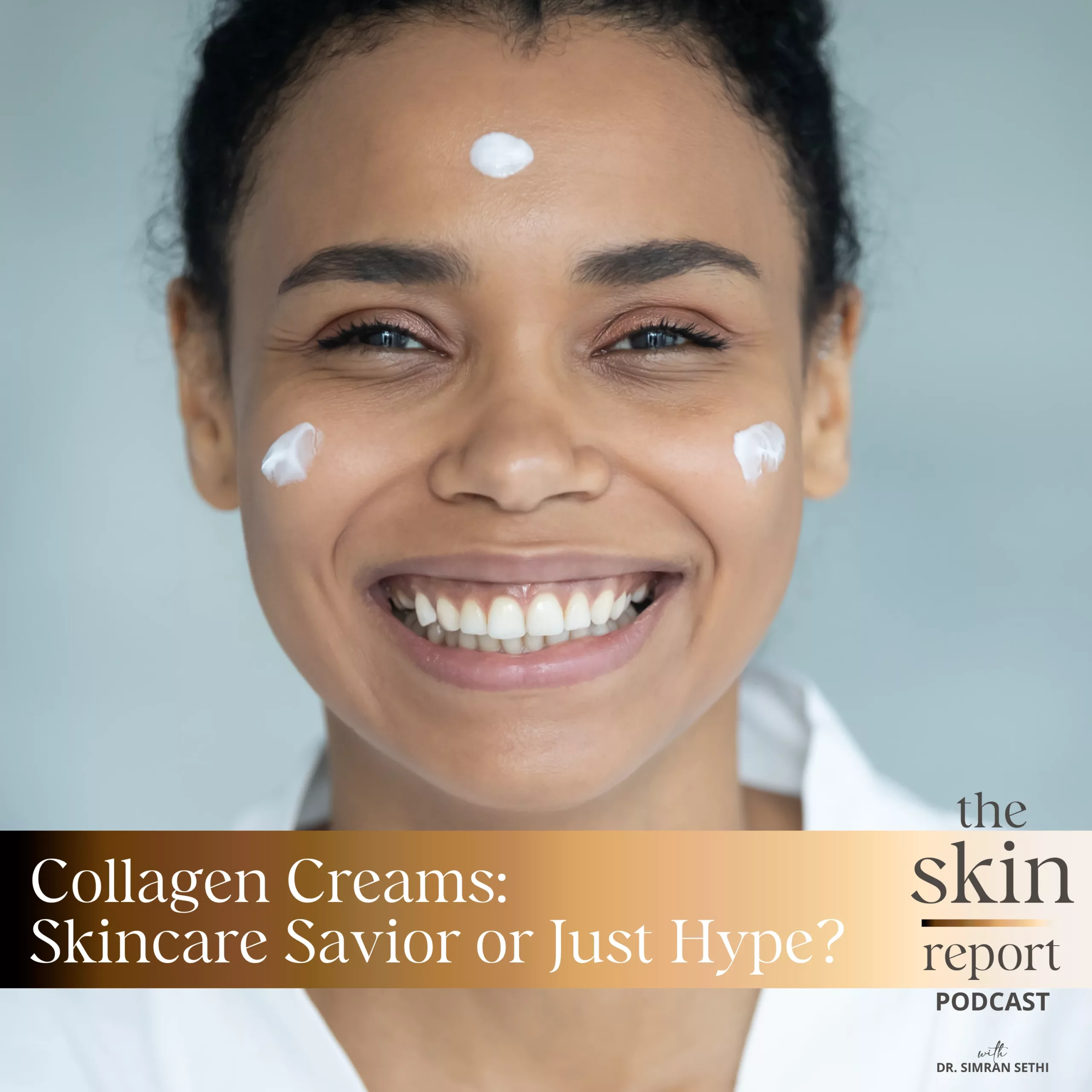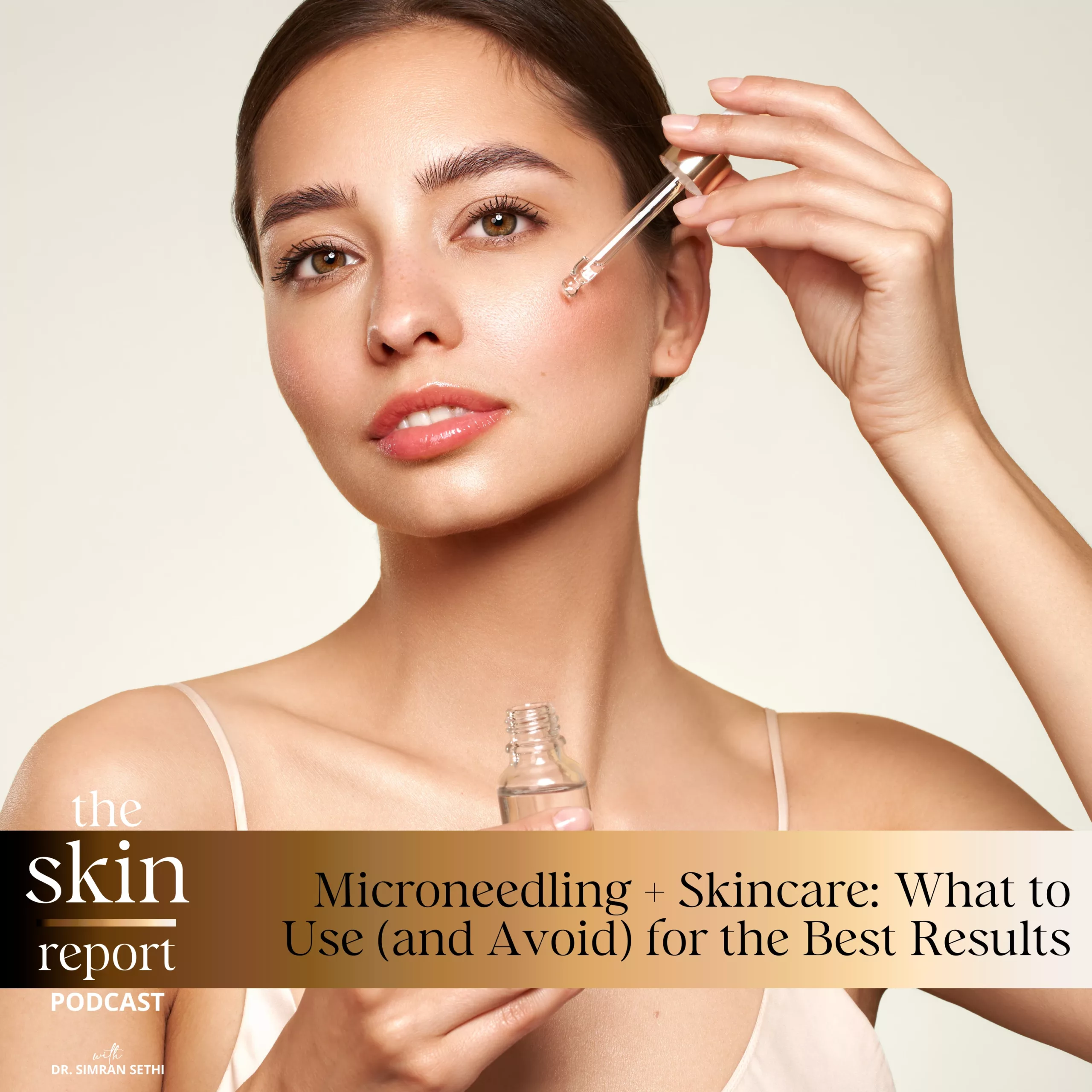Hello everyone. Welcome back to The Skin Report. We are going to discuss microneedling versus chemical peels. Both very, very common procedures, and they both have great benefits. So we’re going to talk about, what is microneedling? What are chemical peels? Of course they’re kind of categories. And who should get microneedling versus chemical peels? And then in the end, I’m actually going to talk about who should absolutely not get microneedled or get a chemical peel. So you know what are the contraindications for them?
I’m Dr. Simran Sethi, a board-certified internal medicine doctor who also specializes in medical aesthetics. Let’s get started.
When we think about microneedling, I’m sure you have probably seen at-home microneedling devices, microneedling treatments done in esthetician’s offices, medical spas. And you’ve also probably seen things like microneedling with PRP, microneedling with exosomes and microneedling with radiofrequency. So it’s such a large category and I do have separate videos talking about some of these in more detail. Definitely look at my video about microneedling at home because it’s a common trend and there are some things to watch out for.
But anyway, microneedling’s job is to break the skin in a controlled fashion, so give it a controlled injury. So that the skin is stimulated to make new skin. The goal though is that when you do microneedle, those needles have to go into the part of the skin where new skin is triggered and made, and that’s the dermis. So that’s the deep layer of the skin. So that’s microneedling description-wise in a nutshell.
Next, chemical peels. And when I’m talking about chemical peels today, I’m not going to go over every kind of chemical peel because there are so many. But with chemical peels, they differ by the strength of the acid in the peel. When you are considering a chemical peel, make sure that you are going to someone who can explain to you the strength of the peel they’re using. And also make sure that they are treating people with your skin tone because that is extremely important when it comes to finding which chemical peel is right for you.
Microneedling basically triggers making new skin, new and healthy skin. So if you want to soften fine lines, if you want to reduce acne scars, if you want to reduce hyperpigmentation from post-inflammatory hyperpigmentation, which a lot of people get if they’ve had acne in the past and now have dark spots, if you want to erase sun damage. Or also in a few cases, melasma, which is a hyperpigmentation condition, microneedling is actually a very, very safe and good solution. And the best part about microneedling is that it is safe in all skin tones and that’s really, really important. So microneedling, if done correctly, addresses so many different skin conditions.
Now when I think about chemical peels, I just think about pigment. So if you go online, you’ll see that there are a lot of chemical peels that promise reducing fine lines, taking away acne scars. And then you see all these pictures and it looks like it’s doing all of those things. It’s not. Chemical peels are not designed to do any kind of collagen stimulation, which means they can’t reduce fine lines, they cannot take away acne scars. Chemical peels are only designed for pigment reduction because their job is to peel off the top layer of your skin, which is where you have pigment. And that’s all they do. So they’re a great tool in aesthetics, but their job is only pigment.
So microneedling, acne scars, fine lines, pigment. Chemical peels, just pigment. And if you are looking to get treated for any of those things, sometimes your provider may actually combine the two, which is fine as long as they know how to treat your skin tone.
Okay, so now that we’ve covered why you should consider microneedling or why you should consider chemical peels. Let me go into when you should absolutely not get microneedled, and when should you absolutely not get a chemical peel.
So microneedling, now remember earlier I had said microneedling is really, really safe. Which it is, but you have to remember that microneedling is only safe if done with a proper device and done at the right depth. Now, we talked earlier about how microneedling’s job is to take needles and give a controlled injury to your skin down to the dermis where you make collagen, so it can trigger you to make more new healthy collagen. You cannot trigger that response if you don’t go deep into the dermis. Which means that if your device isn’t deep enough, you are not going to be able to do that. In fact, you will likely not get any benefit or worsen your skin, and hyperpigment it or scar it if you are not going in to the dermis when you microneedle. So you should absolutely not microneedle, not because of any condition that you may have but microneedle at home. And we have a whole video on this where I’ll explain this in more detail. But microneedling is actually very, very, very safe if done in a proper clinical setting.
Second, who are the people who should never consider a chemical peel? So there are many different strengths of chemical peel, but in general, if you have a condition like melasma, I would not recommend getting a chemical peel. There are some peels that are designed for melasma, and I have mixed feelings about those, especially if you are going to do that peel before doing some other kinds of treatments to kind of prep your skin to handle that kind of peel or for it to become appropriate. But general rule of thumb, avoid a chemical peel if you have a condition like melasma. And if you’re not sure if you have a condition that is melasma, go to a trained professional who can help diagnose you. We have some videos describing what the symptoms of melasma are and so forth. But if you know you have melasma, avoid chemical peels.
Microneedling and chemical peels, they’re great treatments and can have excellent results. But have to be done safely by experienced people. We discussed a lot today, and if you have any comments or if you have any comments after you’ve had microneedling done or chemical peels, I would love to hear your results. Or if you provide them in your aesthetics practice, some of the things you are doing with these treatments, again, love to hear those. Remember, please consider leaving us a review if you enjoy our content. Also subscribe, turn on your notification bell so you get notified whenever we release new content.


